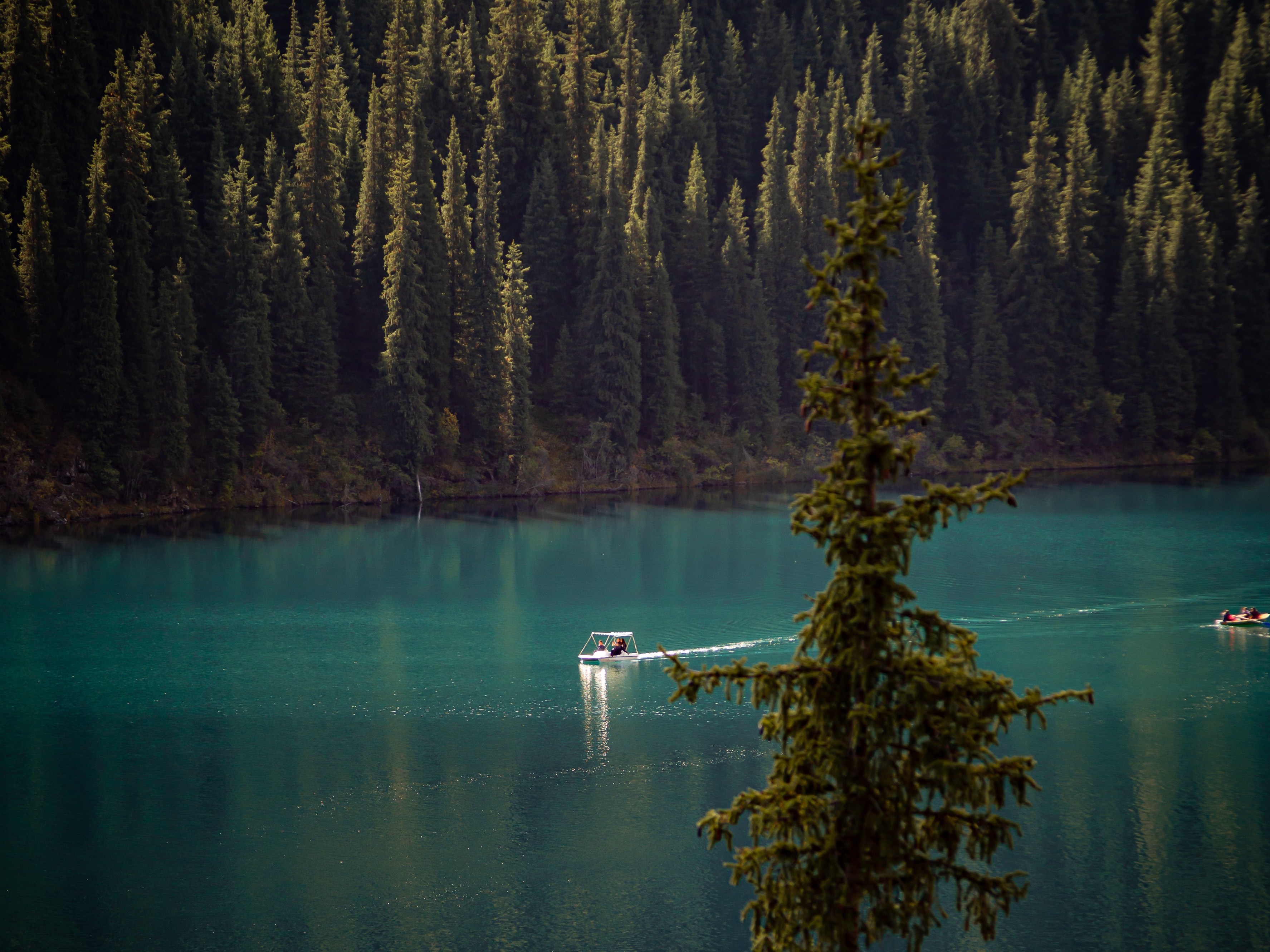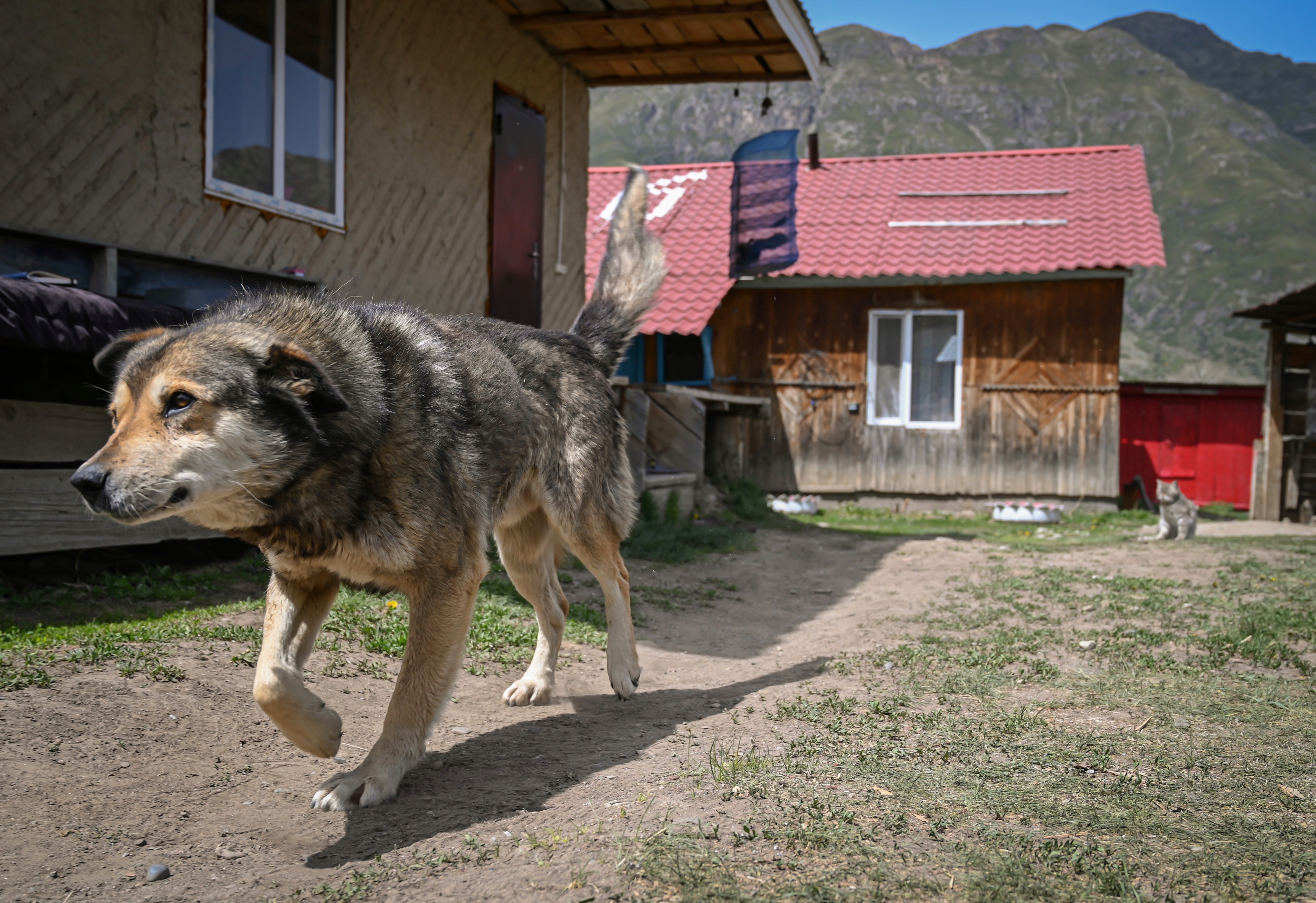Renewable energy and biodiversity conservation in Kazakhstan
May 17, 2023
Sandugash and Zhumabek
Many people are acquainted with Sandugash and Zhumabek, a husband and wife team working as state inspectors in the Kolsai Kolderi National Park. Jointly, they protect the unique biodiversity in the natural park in the Northern Tien Shan Mountains.
The Kolsai Kolderi National Park is one of the five largest parks of Kazakhstan. It covers an area of 161,000 hectares and borders Kyrgyzstan in the north. Due to its unique biodiversity, the park is included in the UNESCO World Network of Biosphere Reserves. It surprises with its picturesque landscapes, mountain landscapes, high-altitude lakes and is home to rare red-list animals such as the brown Tianshan bear, stone marten, snow leopard, Tanshan argali, as well as rare plants: Kungey grasshopper, Sivers Apple tree, Shrenka spruce and others.

Kolsai Lake in the Kolsai Kolderi National Park
The real pearls of the park are the Kolsai Lakes – a system of three high-altitude lakes, which is popularly called the "blue necklace of the Northern Tien Shan". Another natural attraction is the Kaiyndy Lake, the water surface of which is decorated with tall fir trees. The lake was formed as a result of the devastating Kemin earthquake in the early 20th century.
Kaiyndy Lake which was formed as a result of the earthquake in 20th century
Almost year round, the spouses work together in a remote area – cordon, the forestry officers' houses No. 6, – where they live. Speaking about himself, Zhumabek Suranshiev notes that after 13 years working in the national park, he is very accustomed to remote mountain sites and knows every mountain slope, gorge and trails by heart.
"Together with Sandugash, we live on the cordon for 11 months of the year. We work almost around the clock. We both love nature and our national park, so it's a joy to be employed here," he says.
Zhumabek and Sandugash are spouses employed in the Kolsai Kolderi National Park
The well-known national park is located in a scenic area in southeast Kazakhstan near three villages: Zhalanash, Karabulak and Saty, so most of the park's staff are local residents. The staff is comprised of 126 employees, 71 of whom are state inspectors for nature protection. Many work and live there with families, including Sandugash and Zhumabek. Their house is located in Saty village, where they live with their six children and grandchildren.
Kolsai Kolderi National Park employs more than 120 staff, many are residents of villages in southeast Kazakhstan
Zhumabek began his work in the national park in 2010 as a state inspector in the environmental protection department. At the same time, he was sent to a remote area – an cordon to patrol natural areas. Sandugash decided to follow her husband there. After seven years, Sandugash herself became a park state inspector.
Zhumabek Suranshiyev – State Inspector, National Park "Kolsai Kolderi
Six more inspectors work at this territory, but only Sandugash and Zhumabek reside in cordon permanently. They patrol an area of 4,650 hectares, ensuring compliance with environmental regulations, and,in the event of fires, they help to in extinguish them. Inspectors conduct wildlife observations and assist in scientific research, including of rare species listed in the International Union for Conservation of Nature's Red List of Threatened Species, or Red Book, which are of noted value for both Kazakhstan and world biodiversity.
Cordon No. 6 is in a remote area of the national park.
Sandugash says that, as an inspector on the cordon one of his tasks involves working with tourists. Today Kolsai Kolderi National Park is a popular recreation area in Kazakhstan. Every year, over 200,000 tourists visit the part, with some passing through the checkpoint at the cordon where Zhumabek and Sandugash explain the code of conduct on how to behave in nature and check tourists’ documents.
In total, there are more than 70 state inspectors in the national park, who patrol natural areas around the clock
Despite explaining the code of conduct in nature to vacationers, fires are still not uncommon in natural areas.
"We pay special attention to fire safety. Unfortunately, tourist negligence means fires do occurm but we quickly extinguish them," says Sandugash.
With the onset of the tourist season, there will be a problem of household waste because vacationers discard their rubbish around the park, so state inspectors have to carry out garbage collection campaigns in the national park.
Sandugash Akynova – State Inspector
Discussing her work, Sandugash recalls that year one on the cordon was not easy. There was practically no electricity in the house, which translated into difficult living and working conditions. The electricity shortage made life very dire during winter.
“When we moved to the cordon, there was only enough electricity to recharge the walkie-talkies – one or two hours a day. Most arduous was wintertime with short daylight hours. We lived for days without electricity. We lit the stove by candlelight, we cooked and ate by candlelight, and left the room in the darkness," recalls Sandugash.

Eleven months a year the inspectors live on the cordon
Zhumabek also notes the difficult working conditions at remote cordons. Sometimes he and his colleagues would head to the village to charge their equipment, including radio communication devices. Walkie-talkies were the most important items, sometimes the only source of communication between state inspectors and the central office, especially when patrolling the vast and hard-to-reach national park areas.
"We work in all weather conditions: both in snow and hail. Often, we travel for two to three days to hard-to-reach areas, located at 3,500 meters in the mountains - involving a sharp change in temperature and atmospheric pressure. This makes communication very important, sometimes people's lives, including our own, depend on it," Zhumabek explains.
Every day Zhumabek and Sandugash patrol an natural area of 4,650 hectares of the national park
The electricity situation changed in early 2023, when modern wind and solar power plants were installed in the national park at the initiative of the United Nations Development Programme (UNDP) and the Global Environment Facility (GEF). In total, the project installed three wind-solar systems with a capacity of 2 kW in remote natural areas of the Kolsai Kolderi park, with one installed on the outpost cordon where Sandugash and Zhumabek live.
Sandugash accompanies his wife on duty patrolling natural areas, sometimes for two to three days.
Now the couple recall with some disbelief that only six months ago they needed to save electricity. Now they have round-the-clock access to power, and can watch TV, but most important is the stable radio connection. In addition, wind-solar systems allow you to get energy regardless of weather conditions, an extremely important fact given the extreme continental climate of this region.
"Thanks to the installation of the station, our family living conditions have improved. We can watch TV, each room has lighting, and we have constant radio communication with the central office. We can recuperate after heavy shifts. Our mood has definitely improved!" Zhumabek admits.
Today the house has uninterrupted electricity, and they can watch TV
Lack of electricity is an urgent problem in remote regions of Kazakhstan, including in specially protected natural areas. The solution – the introduction of renewable energy sources which are environmentally friendly due to the reduction of carbon dioxide and other pollutants into the atmosphere.
Due to the installation of the power plant, the living conditions on the cordon have changed, which has a positive effect on the monitoring of natural areas
Currently, the UNDP-GEF project is continuing to install 28 wind-solar systems in remote areas of 18 specially protected natural areas and forestry facilities in Kazakhstan.
Increasing the capacity of environmental organizations and improving the living conditions of local communities in remote areas forms the basis of our economic and social well-being and has a positive impact on the conservation of biodiversity and ecological systems of our planet.
The Kolsai Kolderi National Park near the mountain ranges of Kungei Alatau on the border with Kyrgyzstan

 Locations
Locations



